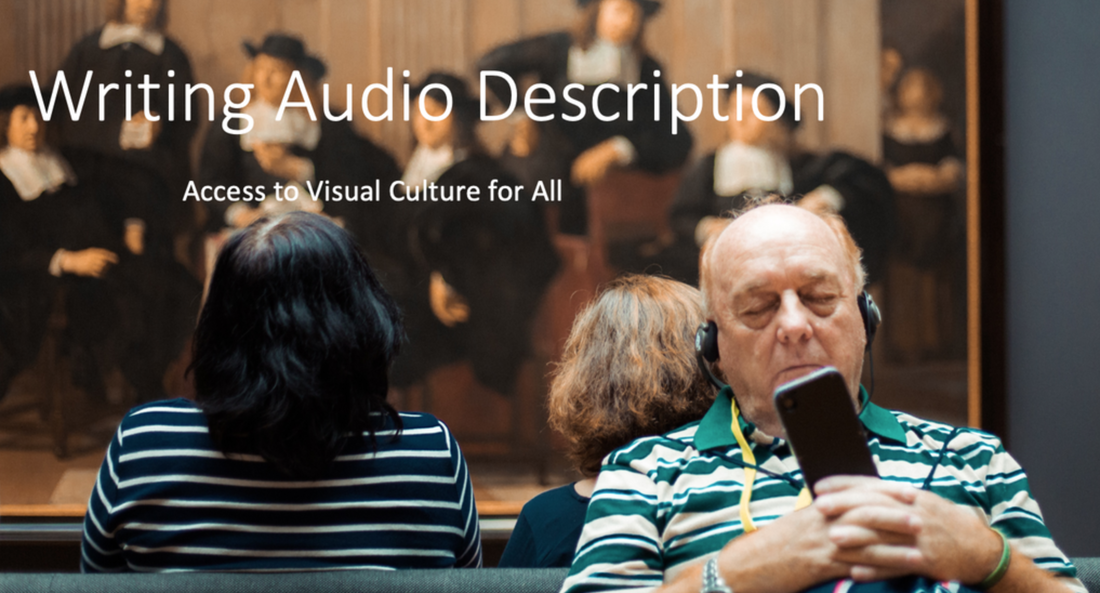
Audio Description (AD) uses words to help people who are blind or have low vision participate in visual culture. AD can also help museums and other cultural organizations meet the legal, moral, and curatorial challenges of providing access and inclusion for all audiences.
|
How Do You Do It?
Writing AD for audio tours or virtual web sites is both an art and a craft. The craft -- techniques you can learn, including how to write language for the ear. The art -- how to convey with words not only what you see, but also artistic style and visual elements that evoke meaning and feeling. |
Who Is It For?
Of course, AD serves people who are blind or have low vision. And for many years, museums felt that if it had an audio tour for its sighted audience, then it needed a separate audio description tour. Museums still successfully produce separate AD tours. But some museums and organizations advocate accessible, inclusive tours that can serve sighted users and users with vision loss. For sighted users, AD can help focus attention and make for richer viewing experiences, especially if sighted visitors choose not to read wall labels. One accessible, inclusive tour can result in cost savings for the museum and create an experience that all visitors can enjoy together. |
Do you want to learn how to write audio description?
Or do you want to consult with me on the design and writing of audio description?
Start by exploring this site in which I share my experiences and offer tips on how to write audio description for museum exhibitions, historical and cultural sites, and virtual web tours:
Writing Audio Description
Photo by redcharlie on Unsplash
Or do you want to consult with me on the design and writing of audio description?
Start by exploring this site in which I share my experiences and offer tips on how to write audio description for museum exhibitions, historical and cultural sites, and virtual web tours:
Writing Audio Description
Photo by redcharlie on Unsplash
